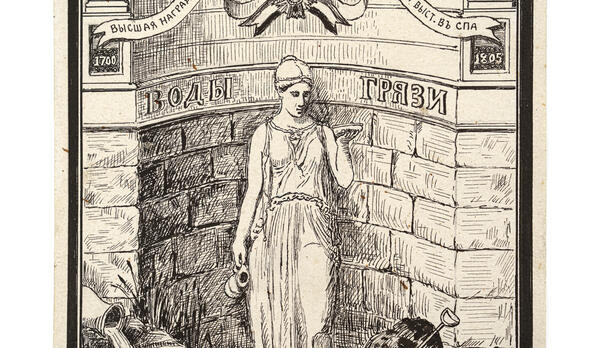The exhibition of the Lipetsk Regional Museum of Local Lore features a bookplate from the library of the Lipetsk Mineral Waters resort, designed by Vladimir Zhukov in 1916. In the miniature oval on the right, the artist depicted the building of the Lipetsk Well Room. On the left, there is an elegant woman in a swimsuit. At the bottom, there are images of therapeutic mud and mineral water. Below the coat of arms at the top, there is the name of the library. On the lower right, there is a place where the number can be indicated.
Vladimir Illarionovich Zhukov (1870–1944) was a poet, artist, scenic designer, and a connoisseur of art and museum activities. He was the main assistant to Mikhail Pavlovich Trunov in the establishment of the Lipetsk Museum of Local Lore. In the 1890s, he developed an interest in miniature graphics, including bookplates. Creating a bookplate took a lot of effort, as the ex libris needed to indicate the features, history, and purpose of a library through small details. The bookplates were created by Zhukov using zincography, the technique of engraving on zinc. They were distinguished by their high quality, thought-out design, expressiveness, and cohesive composition. His miniatures, with their exquisite detailing, had a deep meaning and explored episodes from the history and culture of the Lipetsk land.
A bookplate, also known as an ex libris, is a label pasted into a book to indicate ownership. The term “ex libris” comes from Latin and means “from the books”. In the past, when printed books were expensive, their owners used bookplates to indicate their right of ownership. Wealthy people commissioned personalized bookplates. They were designed by means of engraving on wood, metal, or other materials. Over time, a bookplate became not just a sign of ownership but also an element of book décor and an artwork of its own. In Russia, the first engraved bookplates appeared during the reign of Peter the Great, and their popularity peaked in the early 20th century.





